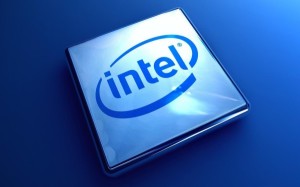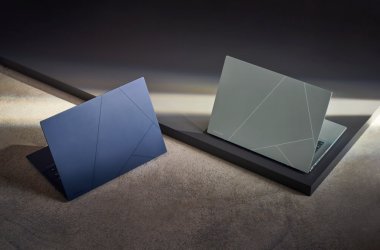From mundane 2D devices, integrated cameras in laptops and tablets in the future will change into powerful 3D tools that can sense movement, track emotion, and even monitor reading habits of children, according to Intel.

Intel is developing a “depth sensing” camera, which is an enhanced version of a 3D camera that can go deeper inside images to “bridge the gap between the real and virtual world,” said Anil Nanduri , director of perceptual products & solutions at Intel.
The webcam enhancements will help the computer understand a human better, bring new levels of interactivity to 3D games, and make webconferencing fun by blanking out the background and adding a green screen, Nanduri said.
“You’ll add the ability to sense your excitement, emotion — whether you are happy or smiling. The algorithms and technologies are there, but they are getting more refined, and as they get more robust, you’ll see them,” Nanduri said.
Such depth cameras will be integrated into laptops and ultrabooks in the second half of 2014. The technology will initially appear in external webcams such as Senz3D external webcam, which was jointly developed by Creative and Intel, and will become available in the coming quarters. The camera technology will ultimately trickle down to tablets and smartphones, Nanduri said.
The camera will also be able to identify characteristics, contours and shapes of items in view. For example, the camera’s ability to sense distance, size, depth, color, contours and other parameters of structures could also help in the growing area of 3D printing. A depth sensing picture of a model can be extracted to reveal exact specifications and other details of a design, which can then be printed.
“You are not going to look for a case [for a device] anymore, you’ll just point that device, and the cameras will recognize what you have. It’ll know the model number…and it’ll print [the case] for you, or you go to the store, they will print it for you,” Nanduri said.
With the help of eye tracking, it could also track how well somebody is reading and use that information as an evaluation tool. For example, it could track reading, and tell if kids are stuck on words, how much they read, or whether they need help with specific words.
“Having the capabilities to say — they read about 80 percent of the lines, they had difficulty with these words — that kind of intelligence for educational tools is phenomenal,” Nanduri said.
Other small enhancements also include using a motion-sensing game where hands can be followed to pick up objects in the wider dimension of 3D games. The data collected by the camera could be combined with other modalities like voice recognition to improve human-computer interaction.
There are already 3D cameras out there, but Intel is trying to tack on the algorithm and hardware features that make images more meaningful.
“Kinect was a good initial version of a depth camera more from a long range perspective. When Intel started looking at it, we were primarily looking at it primarily as more personal interaction, short range, which is probably a meter or meter-and-a-half range of interaction,” Nanduri said.
Integration in the thin ultrabook display panels may be a challenge. Intel is addressing the challenges with a high resolution short-range camera that focuses on a small area, and what Nanduri called “finger-level articulation.”
“You need to have a lot more resolution for that zone. To really scale it to volumes, you need to get to the right form factor from the optics perspective, you need to get to the right power levels and you need to have the right cost structure to help scale it into integration,” Nanduri said.
When the technology reaches devices, users may progressively forget the keyboard and mouse when interacting with computers.
“When you have depth information, what you can do with it is pretty phenomenal,” Nanduri said.
Update: An earlier version of the story due to incorrect information provided by the vendor, misstated the name of the company Intel is working with on a 3D camera.





